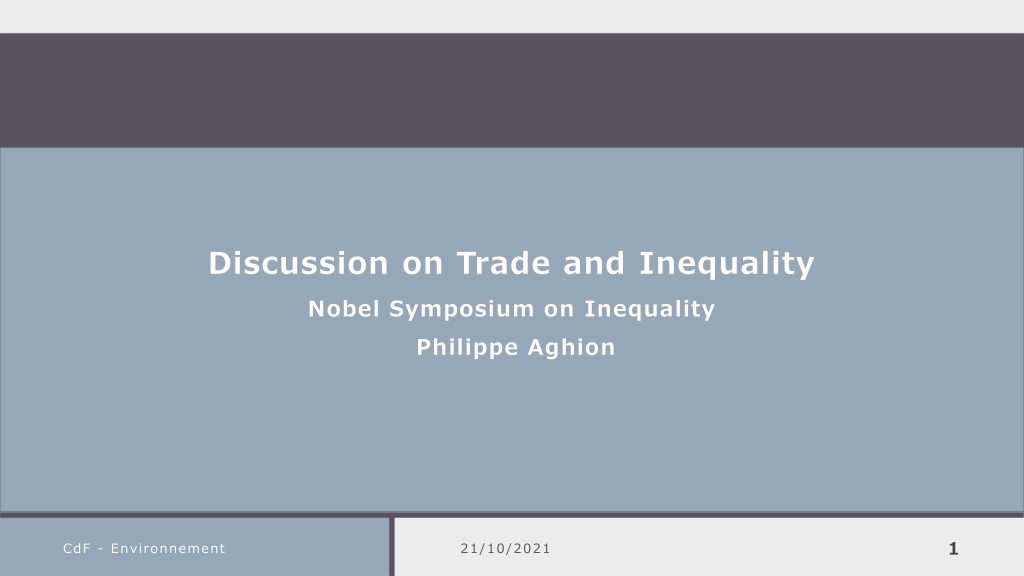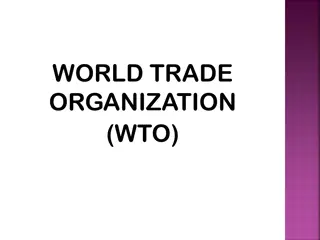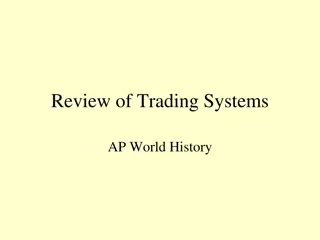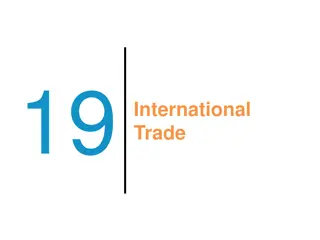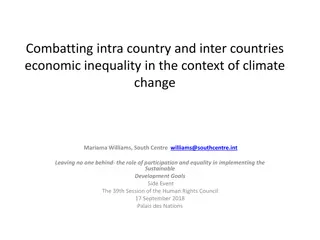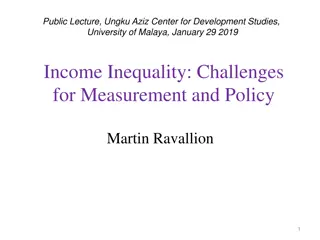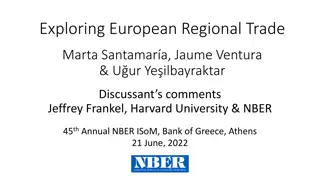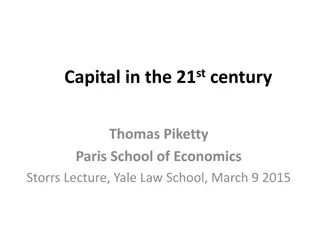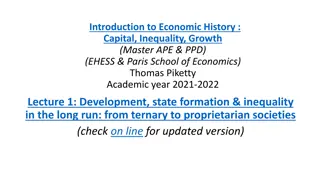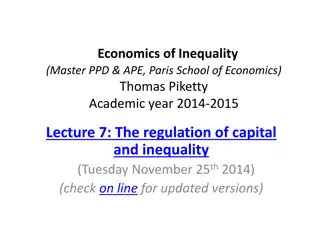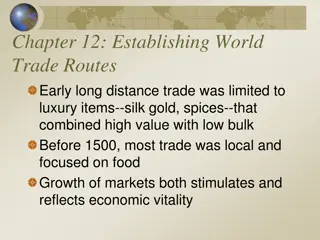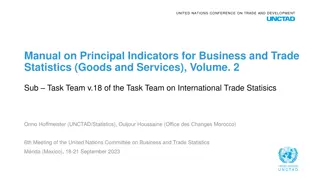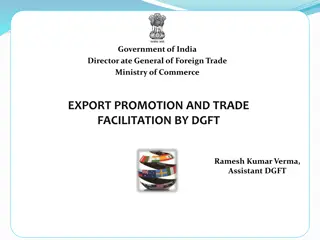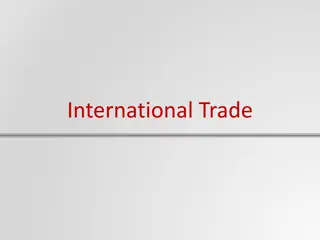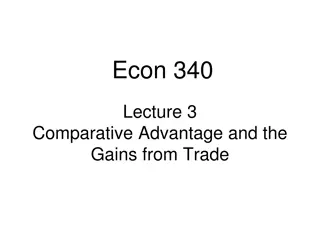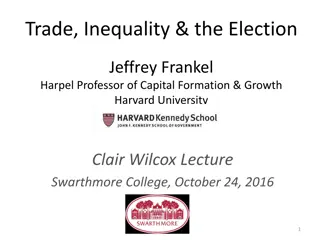Discussion on Trade and Inequality
Explore the shift in consensus on trade and inequality from the late 1990s to the 2000s, with a focus on within-country and global inequality impacts. Delve into the effects of trade liberalization, globalization, and policy changes on income distribution.
Download Presentation

Please find below an Image/Link to download the presentation.
The content on the website is provided AS IS for your information and personal use only. It may not be sold, licensed, or shared on other websites without obtaining consent from the author.If you encounter any issues during the download, it is possible that the publisher has removed the file from their server.
You are allowed to download the files provided on this website for personal or commercial use, subject to the condition that they are used lawfully. All files are the property of their respective owners.
The content on the website is provided AS IS for your information and personal use only. It may not be sold, licensed, or shared on other websites without obtaining consent from the author.
E N D
Presentation Transcript
Discussion on Trade and Inequality Nobel Symposium on Inequality Philippe Aghion 1 CdF - Environnement 21/10/2021
Basic questions (1) 1. Dominant view until the late 1990s that trade was not the main factor underlying the increase in within-country inequality. E.g see Berman, Bound and Griliches (1994). (Why) did this consensus shift in the 2000s, and was that shift justified? 2 CdF - Climat 02/11/2021
Basic questions (2) 2. Isn t the effect of trade liberalization on within-country inequality secondary compared to its effect on global interpersonal inequality? 3 CdF - Climat 02/11/2021
Global income inequality: An elephant in the room 4 CdF - Environnement 21/10/2021
Goldberg (2022) The Unequal Effects of Globalization 5 CdF - Climat 02/11/2021
An elephant in the room 6 CdF - Climat 02/11/2021
Declining global inequality Hammar, O., Waldenstr m, D. (2020). Global Earnings Inequality , EJ 7 CdF - Climat 02/11/2021
Declining global poverty 8 CdF - Climat 02/11/2021
Questions: 1. Can we establish a causal effect of trade openness on global inequality? Perhaps negatively, looking at effects of the post-Covid deglobalization (?) 2. Isn t the reduction in global inequality partly due to China s departure from Washington consensus policies (Rodrik)? export promotion, industrial policy 9 CdF - Climat 02/11/2021
Within-country inequality 10 CdF - Environnement 21/10/2021
A shift ? (1) - Since the late 1990s, the consensus shifted away from the view that globalization is not a primary driver of rising inequality: why? 11 CdF - Climat 02/11/2021
A shift ? (2) After all, Borusyak-Hull-Jaravel (2021): Once controlling for sectoral dynamics, namely for manufacturing sector * period fixed effects, the effect of the China shock on manufacturing employment falls dramatically and its effect on unemployment becomes non-significant 12 CdF - Climat 02/11/2021
A shift ? (3) How important are between-firm inequality effects ? if some firms suffered from the China shock, others benefited from it. 13 CdF - Climat 02/11/2021
A shift ? (4) Aghion-Bergeaud-Lequien-Melitz-Zuber (2022), using comprehensive French firm-level panel data over the period 1994-2007 The negative effects of the China import shock on sales, employment, and patenting, are concentrated on domestic firms with below median initial productivity and which face Chinese competition on their output goods 14 CdF - Climat 02/11/2021
A shift ? (5) 15 CdF - Climat 02/11/2021
A shift ? (6) 16 CdF - Climat 02/11/2021
A shift ? (7) Also in line with our previous work with Nick and Richard on competition and innovation Aghion-Bergeaud-Lequien-Melitz (2021) find a positive effect of export markets expansion on domestic firms innovation, mostly for the most productive domestic firms 17 CdF - Climat 02/11/2021
A shift ? (8) Are we downplaying the importance of perceptions? globalization is perceived as a salient driver of inequality (Di Tella and Rodrik, 2020) it is also perceived as an unfair source of inequality (Deaton, 2017) Stantcheva (2022): Understanding Trade 18 CdF - Climat 02/11/2021
Stantcheva: Understanding Trade Stantcheva (2022) uses large-scale surveys of people s understanding and perceptions of trade In particular, she finds that those more exposed to trade or who think they are more exposed (through their job, sector, occupation) are more opposed to trade and think that trade does not increase efficiency, innovation, etc. 19 CdF - Climat 02/11/2021
A shift ? (9) Shouldn t we look at trade liberalization as just one more source of creative destruction? Borusyak and Jaravel (2022): most of the distributional effects of trade are in fact within income and educational groups Look at the relationship between innovation and inequality 20 CdF - Climat 02/11/2021
Innovation and inequality 21 CdF - Environnement 21/10/2021
Innovation and various measures of inequality (1) Aghion, Akcigit, Bergeaud, Blundell, Hemous (2018) 22 CdF - Climat 02/11/2021
Innovation and various measures of inequality (2) Aghion, Akcigit, Bergeaud, Blundell, Hemous (2018) 23 CdF - Climat 02/11/2021
Reduces social mobility By contrast, lobbying.. Increases broad inequality Steve Jobs versus Carlos Slim
The wealthy, including past innovators, can stiffle future innovation Yes but . Aghion-Bergeaud-Boppart-Klenow-Li (2022)
Not everybody can become an innovator and social origins matter Yes but .
32 3/8/2025
33 3/8/2025
Conclusion 34 CdF - Environnement 21/10/2021
Conclusion (1) - If trade liberalization is a special instance of creative destruction, then the policy response should be the same, and protectionism is not the solution 35 CdF - Climat 02/11/2021
Conclusion (2) - Reform competition policy to factor in innovation and entry (Gilbert, 2020) - Reform education policy to generalize access to high-quality education (Finland, 1970) - Reform labor market policy to help workers relocate to more productive firms and sectors: the Danish model 36 CdF - Climat 02/11/2021
Conclusion (3) - Trade liberalization had led to more political polarization in the US than in Denmark 40 CdF - Climat 02/11/2021
Conclusion (4) - If anything, continental Europe is experiencing the unequalizing effects of COVID-driven trade contraction Akerman-Ekholm-Persson-Skans (2022): The negative effects were concentrated on firms that traded with heavily impacted countries And these turned out to be the firms employing more low-education workers, whose earning thus ended up being more dramatically affected by the trade disruption caused by the pandemics 41 CdF - Climat 02/11/2021
Conclusion (5) - New research agenda on trade contraction, value chains, and inequality! 42 CdF - Climat 02/11/2021
